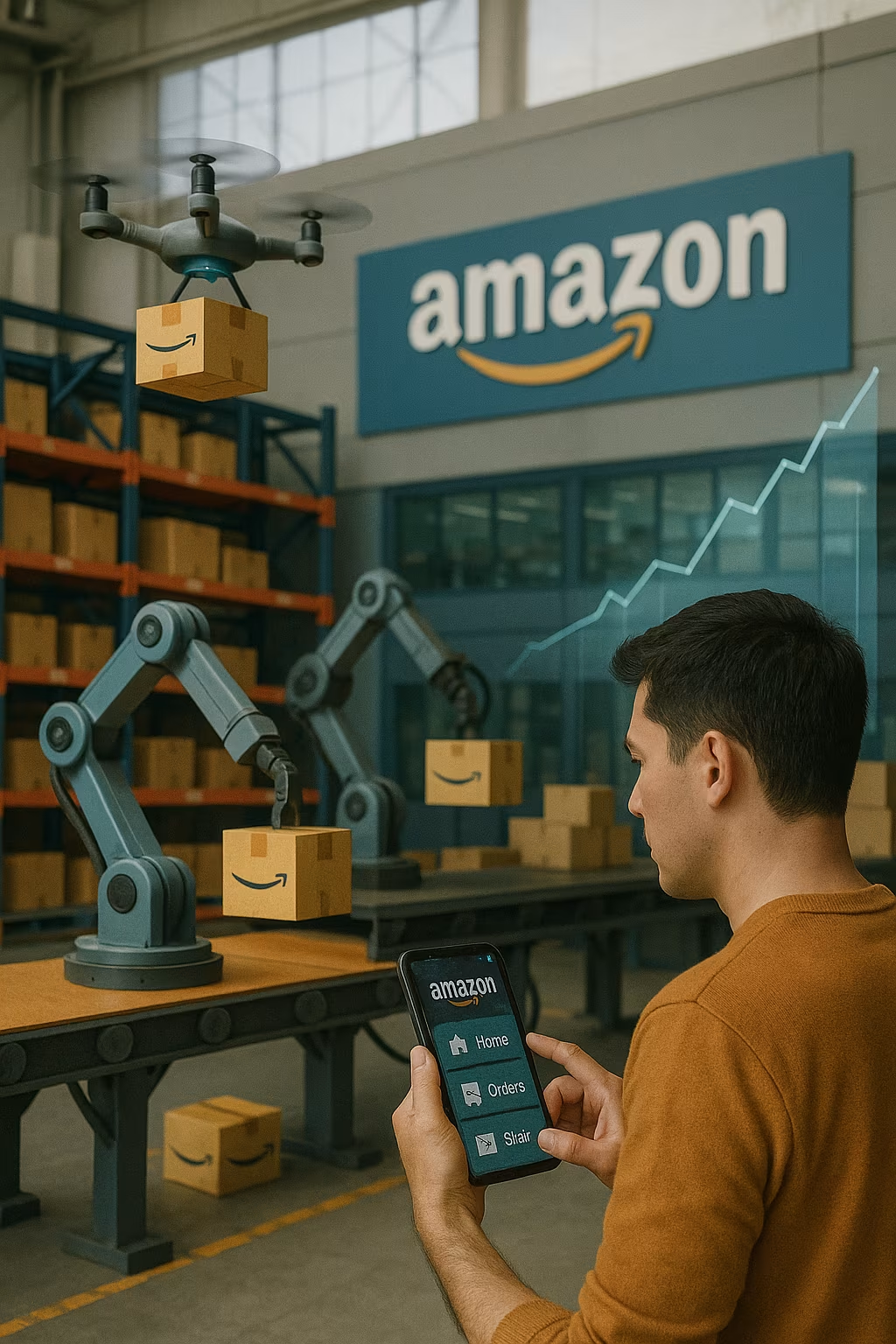Amazon has long been a driving force behind the evolution of online shopping, but its ambitions extend far beyond two-day delivery and virtual storefronts. From AI-powered warehouses to cashierless grocery stores and drone deliveries, the world’s largest e-commerce company is now setting the stage for the next era of retail — one that blends technology, logistics, and personalization at scale.
In an increasingly competitive market, Amazon’s next move is not just about dominating e-commerce. It’s about redefining what shopping means in a hybrid world where physical and digital commerce converge seamlessly. With innovations spanning automation, AI, cloud computing, logistics, and consumer behavior prediction, Amazon is positioning itself as the operating system of modern retail.
Here’s a deep dive into how Amazon is shaping the future of retail — and what it means for consumers, businesses, and the broader economy.
Reinventing Physical Retail With Smart Technology
While Amazon is best known for its online dominance, it has been aggressively expanding into physical retail. From acquiring Whole Foods Market to launching its own Amazon Go and Amazon Fresh stores, the company is transforming traditional brick-and-mortar spaces using sensor-based, AI-driven technologies.
At Amazon Go stores, for instance, customers can enter by scanning a QR code on their phones, take items off the shelf, and walk out — with the system charging their accounts automatically using computer vision and shelf sensors. No checkout lines, no cashiers.
This “Just Walk Out” technology is already being licensed to third-party retailers, suggesting Amazon sees its tech infrastructure as a product in itself — not just a means of operating stores.
For Amazon, physical retail isn’t a relic of the past; it’s a testbed for innovation.
The Rise of Omni-Channel Ecosystems
Amazon understands that consumers don’t shop in just one channel anymore. They browse online, buy in-store, return via app, and interact with brands across multiple platforms. To serve this behavior, Amazon is building a seamless omni-channel ecosystem, integrating:
- Amazon.com for traditional e-commerce
- Physical stores for groceries and everyday essentials
- Alexa for voice-assisted shopping
- Amazon Prime for loyalty and media integration
- Amazon Hub and Locker systems for local delivery and returns
- Buy with Prime for merchants who want to integrate Amazon’s checkout and fulfillment into their own websites
This ecosystem allows Amazon to collect rich consumer data at every touchpoint, enabling hyper-personalized recommendations and real-time inventory optimization. It also ensures Amazon remains a part of the shopping journey — no matter where or how it begins.
Logistics: The Backbone of Future Retail
One of Amazon’s biggest advantages lies beneath the surface: its logistics infrastructure. The company now controls a massive global network of fulfillment centers, sortation hubs, last-mile delivery vans, cargo planes, and shipping operations — many of which rival or outperform traditional logistics providers.
Amazon’s continued investment in robotic fulfillment centers and autonomous delivery technologies (such as Scout, its sidewalk delivery robot) is designed to increase speed, reduce human error, and cut delivery costs. In 2023, the company delivered over 5 billion packages in the U.S. alone using its own delivery network, reducing reliance on third-party carriers.
Looking forward, Amazon is working on predictive logistics, where items are shipped toward buyers even before they click “buy,” based on purchasing patterns and machine learning models. This anticipatory shipping model aims to make delivery almost instantaneous — a game changer for modern retail.
Generative AI and Personalized Shopping
With the explosion of AI tools in 2024 and 2025, Amazon has embraced generative AI to reshape the way users discover, evaluate, and purchase products.
From AI-generated product summaries and reviews to smart virtual assistants that help customers make decisions, Amazon is turning shopping into a personalized, conversational experience. These systems learn from your behavior and preferences, offering:
- Tailored product recommendations
- AI-curated shopping lists
- Predictive reordering reminders
- Dynamic pricing based on behavior and inventory
Moreover, Amazon has begun to introduce AI shopping agents that simulate a real conversation — letting users ask questions like, “What’s the best compact camera under $500 for travel bloggers?” and receive detailed, product-linked responses.
This makes the e-commerce experience not just faster, but smarter — giving Amazon an edge over competitors that still rely on static filters and reviews.
Partnering With Sellers, Not Replacing Them
Unlike traditional retailers that compete with their suppliers, Amazon’s Marketplace strategy positions it as both a seller and an enabler. Nearly 60% of all items sold on Amazon are from third-party sellers, and Amazon has invested heavily in tools to help them succeed.
Through Fulfillment by Amazon (FBA), Sponsored Products, A+ content, and seller analytics, Amazon provides an end-to-end platform for businesses of all sizes. Its goal isn’t just to be a store — it’s to be the infrastructure of global commerce.
Recent moves like the expansion of “Buy with Prime” — which brings Amazon’s fast checkout and shipping to external websites — indicate that Amazon wants to power retail beyond its own borders.
If successful, this will allow Amazon to insert itself into transactions that don’t even occur on its platform — a quiet but powerful expansion of its retail empire.
Expanding Into New Retail Frontiers
Amazon isn’t stopping at groceries, electronics, or fashion. Its next move could bring disruption to:
- Healthcare: With Amazon Pharmacy and its acquisition of One Medical, Amazon is setting up a retail-like model for prescriptions and virtual healthcare.
- Automotive: From selling car parts and accessories to hosting full vehicle listings, Amazon may soon become a marketplace for cars and auto services.
- Financial services: With tools like Amazon Pay and business credit lines, Amazon is increasingly acting as a fintech player.
Each of these markets represents billions in potential revenue — and Amazon is applying its core formula of tech, logistics, and user experience to penetrate them all.
Challenges Ahead
Despite its dominance, Amazon faces ongoing scrutiny over its market power, treatment of warehouse workers, and data practices. Regulators in the U.S. and EU are increasingly questioning whether its vertical integration harms competition or consumer choice.
Meanwhile, newer platforms like Temu, Shein, and TikTok Shop are competing on price and speed — challenging Amazon to stay agile.
Still, Amazon’s unmatched infrastructure, deep pockets, and long-term mindset give it tools few competitors can match.
Amazon’s next move isn’t just another Prime Day or new product category — it’s about transforming the nature of retail itself. By blending physical and digital commerce, building AI into every layer of the customer journey, and turning logistics into a strategic weapon, Amazon is defining what modern shopping will look like in the years ahead.
Whether you’re a customer, a seller, or a competitor, one thing is clear: the future of retail won’t just include Amazon — it will be shaped by it.





